Pull Test In Parkinsons Disease
The pull test (PT) is used as a measure of postural instability in Parkinson's disease (PD) and other movement disorders In 1987, it was incorporated into the Unified Parkinson's Disease Rating Scale (UPDRS), a scale used to measure the severity and treatment response in PD both in research studies and in clinical practice.

Pull test in parkinsons disease. Postural stability (retropulsion or forced pull back test) with eyes open, ask the patient to stand with feet comfortably apart, stand behind close to the patient and explain that you will deliver a quick pull back (eg Parkinson’s disease) often show retropulsion and may take several steps backwards and be unable to maintain their. Driving allows personal freedom, control and independence Many people with Parkinson’s disease (PD) continue to drive safely long after their diagnosis While Parkinson’s progression and medication side effects may affect a person’s driving ability, the diagnosis alone does not tell the whole story Much depends on a person’s specific symptoms, as well as the presence of other age. Normal maintains balance and steps backward;.
The retropulsion test is widely regarded as the gold standard to evaluate postural instability, and is therefore a key component of the neurological examination in PD Postural instability is a disabling feature of Parkinson's disease (PD), contributing to recurrent falls and fallrelated injuries. Axial symptoms associated with Parkinson's disease, such as freezing of gait, postural instability, trunk posture alterations, and dysarthrophonia, have a significant impact on patients' quality of life Moreover, these symptoms are poorly responsive to dopaminergic drugs and surgical therapies Still, the understanding of their physiopathologic underpinnings and reciprocal interconnection is. Clinical trials Explore Mayo Clinic studies testing new treatments, interventions and tests as a means to prevent, detect, treat or manage this disease Lifestyle and home remedies If you've received a diagnosis of Parkinson's disease, you'll need to work closely with your doctor to find a treatment plan that offers you the greatest relief from symptoms with the fewest side effects.
Pagan FL Improving outcomes through early diagnosis of Parkinson's disease Am J Manag Care 12 Sep;18(7 Suppl)S176 Postuma RB, Berg D Advances in markers of prodromal Parkinson disease Nat Rev Neurol 16; The Michael J Fox Foundation for Parkinson’s Research. In this third stage, Parkinson's disease significantly advances, and it is often considered midstage in the entire progression of the disorder Loss of balance is finally experienced and the pull test is performed to check If you don't regain your balance and the doctor has to catch you to prevent a fall, it is said that your balance is impaired. Pull test performance and correlation with falls risk in Parkinson’s disease Performance e correlação do teste de retropulsão com o risco de quedas na doença de Parkinson Renato P Munhoz1,2, Helio A Teive3 ABSTRACT Postural instability (PI) and falls are major sources of disability in Parkinson’s disease (PD).
A number of clinical tests are available for testing balance in patients with Parkinson’s disease The Berg Balance Scale, the BESTest, the Tinetti Test, and the Timed Up and Go (TUG) are commonly used in hospitals and longterm care settings The Pull Test, part of the UPDRS, is also used to test postural reactions in those with PD. Prodromal and Early Parkinson's Disease Diagnosis Earlier diagnosis may lead to earlier and more effective treatments Most commonly, this is assessed by the pull test wherein the examiner stands behind the patient and exerts a sudden backwards tug;. He turned fairly well and had mild retropulsion, taking five steps on the pull test, but recovering unaided He was diagnosed with early Parkinson disease (PD) He was initiated on carbidopa/levodopa 25 mg/100 mg titrated to 1 tablet 3 times per day before meals.
My experience and opinion is this the pull test you see here, is very important and shows how after a month changes improving It is part of the visit that the doctor does that includes interview, complete UPDRS test including pull test, answer to Patient questions look at the videos of previous visits to see the changes (usually for the. Variability in pull test (PT) performance can lead to inadequate evaluation of postural instability in patients with Parkinson’s disease (PD). 2 Munhoz RP, Li JY, Kurtinecz M, Piboolnurak P, Constantino A, & Fahn S et al (04) Evaluation of the pull test technique in assessing postural instability in Parkinson’s disease Neurology, 62, 3 Jacobs JV, Horak FB, Van TK, & Nutt JG (06) An alternative clinical postural stability test for patients with Parkinson’s disease.
Postural instability is a disabling feature of Parkinson's disease (PD), contributing to recurrent falls and fallrelated injuries The retropulsion test is widely regarded as the gold standard to evaluate postural instability, and is therefore a. This includes an improvement of UPDRS symptoms by at least 50%, and normalize the pull test Effect of Treatment on the Pull Test The improvement of the results of the pull test are only observed with the treatment with high dose thiamine A normal person receiving the pull back either stays steady or takes one single step back to avoid falling. Stand behind the patient and firmly pull them backward by the shoulders Interpretation;.
The pull test is usually normal in early PD, with no more that one step backward needed to recover The timed “up and go” test is a simple and reliable timed ambulation test The patient is timed and the number of steps counted while he or she rises from an armchair, walks 3 to 6 meters (10 to feet), turns, walks back, and sits down. Dystonia and dyskinesia are movement problems that commonly occur in Parkinson’s disease (PD)You may experience one or both of them, particularly in latestage PD Dystonia is muscle stiffening caused by PD, while dyskinesia is a type of muscle twisting caused by some PD medications. Stability and mobility in functional motor activities depend on a precise regulation of phasic and tonic muscular activity that is carried out automatically, without conscious awareness The sensorimotor control of posture involves a complex integration of multisensory inputs that results in a final motor adjustment process All or some of the components of this system may be dysfunctional in.
Parkinson disease (PD) is a neurodegenerative disease involving a progressive depletion of dopaminergic neurons in the basal ganglia, particularly the substantia nigra PD usually manifests at appr. It has been estimated that, especially in its early stages, nearly 40% of people with Parkinson’s Disease may not be diagnosed, and as many as 25% are misdiagnosed Parkinson's and PET Scans A. Parkinson's disease (PD) is a degenerative disorder of the central nervous system that often impairs the Stage 25 Symptoms appear on both sides and still mild, with recovery on pull test Stage 3 Symptoms are mild to moderate, some postural instability occurs, but patients are physically.
Parkinson’s disease She has really been doing quite well with a slight increase in her dose of Sinemet, and we would like her to continue on Sinemet 25/100 mg 11/2 tablets tid 2 Orthostasis Though she has been asymptomatic since I saw her last, she continues to have low blood pressures, and tilt table test does show evidence of. The Retropulsion Test’ or Pull Test’ (Postural Stability Item #30 of the Unified Parkinson’s Disease Rating Scale;. Postural reflexes are impaired in conditions such as Parkinson's disease, leading to difficulty walking and falls In clinical practice, postural responses are assessed using the 'pull test.
Postural instability takes multiple steps backward, or falls. The UPDRS scale refers to Unified Parkinson Disease Rating Scale, and it is a rating tool used to gauge the course of Parkinson’s disease in patients The UPDRS scale has been modified over the years by several medical organizations, and continues to be one of the bases of treatment and research in PD clinics. Variability in pull test (PT) performance can lead to inadequate evaluation of postural instability in patients with Parkinson’s disease (PD) Assessing 66 PTs by 25 examiners, at least two of four raters agreed that specific items were performed incorrectly for stance in 273%, for strength and briskness of the pull in 849%, for examiner’s response in 364%, and for technique issues in 91%.
He turned fairly well and had mild retropulsion, taking five steps on the pull test, but recovering unaided He was diagnosed with early Parkinson disease (PD) He was initiated on carbidopa/levodopa 25 mg/100 mg titrated to 1 tablet 3 times per day before meals. Here is a video of Dr C performing the pull test on a patient He stands behind the patient and gives a firm pull or tug at the front of the shoulders so that they are quickly pulled backwards This puts the patient off balance and he is checking to see how quickly the patient regains their balance. A normal response is a rapid recovery in 1 to 2 steps It should be noted, however, that.
The retropulsion test is widely regarded as the gold standard to evaluate postural instability, and is therefore a key component of the neurological examination in PD A normal retropulsion test distinguishes milder PD (Hoehn and Yahr 1 and 2) from moderate to severe PD (Hoehn and Yahr stage 3 to 5) 2. Stability and mobility in functional motor activities depend on a precise regulation of phasic and tonic muscular activity that is carried out automatically, without conscious awareness The sensorimotor control of posture involves a complex integration of multisensory inputs that results in a final motor adjustment process All or some of the components of this system may be dysfunctional in. The pull test (PT) is used as a measure of postural instability in Parkinson's disease (PD) and other movement disorders In 1987, it was incorporated into the Unified Parkinson's Disease Rating Scale (UPDRS), a scale used to measure the severity and treatment response in PD both in research studies and in clinical practice.
Sway measures did not differentiate between patients with pulltest scores 1 and 2 or one and >1 side step in tandemgait, respectively Results of ANOVA showed that variance of static posturography was related to performance in tandemgait (P < ) but not to pulltest performance (P = 091). UPDRS) is a commonly used clinical test of postural stability for patients with PD This test evaluates the ability of patients to recover from a backward pull on the shoulders. Parkinson's disease or parkinsonism have been described after infections by viruses, such as influenza A, EpsteinBarr virus, varicella zoster, hepatitis C virus, HIV, Japanese encephalitis virus, or West Nile virus1 We report a patient with probable Parkinson's disease, who was diagnosed after severe acute respiratory syndrome coronavirus 2 (SARSCoV2) infection.
The execution of these tests and the position of the patient and therapist are important to obtaining accurate results Expected Retropulsive Test This test procedure is required in the Unified Parkinson's Disease Rating Scale (UPDRS) and is typically performed by a neurologist Because patients are aware that they are going to be pulled. Parkinson’s is officially classified as a movement disorder because it involves damage to the areas of the brain, nerves and muscles that influence the speed, quality, fluency and ease of movementMotor (or movementrelated) symptoms are usually the most visible elements of Parkinson’sMotor symptoms of Parkinson’s also respond well to Parkinson’s medications. The Pull Test is a quick and informative subscore of the motor part of the Unified Parkinson's Disease Rating Scale (UPDRS), and it is used as the main clinical examination for evaluating postural stability in people with PD It consists of pulling subjects backward from their shoulders and scoring the subject's ability to respond to this.
Dystonia and dyskinesia are movement problems that commonly occur in Parkinson’s disease (PD)You may experience one or both of them, particularly in latestage PD Dystonia is muscle stiffening caused by PD, while dyskinesia is a type of muscle twisting caused by some PD medications. 2 Munhoz RP, Li JY, Kurtinecz M, Piboolnurak P, Constantino A, & Fahn S et al (04) Evaluation of the pull test technique in assessing postural instability in Parkinson’s disease Neurology, 62, 3 Jacobs JV, Horak FB, Van TK, & Nutt JG (06) An alternative clinical postural stability test for patients with Parkinson’s disease. How to Test for Parkinson's Disease Parkinson's Disease (PD) is a progressive neurodegenerative disorder affecting both motor and nonmotor abilities It afflicts 1% of those over 60 years of ageJOHN D GAZEWOOD, MD, MSPH,D ROXANNE.
We have three tests for this part of the PD exam 1) Standing up from a chair 2) Free walking 3) Provoked “pull test” maneuver for balance. Goetz CG, Fahn S, Martinez‐Martin P, Poewe W, Sampaio C, Stebbins GT, Stern MB, Tilley BC, Dodel R, Dubois B, Holloway R, et al Movement Disorder Society‐Sponsored Revision of the Unified Parkinson's Disease Rating Scale (MDS‐UPDRS) process, format, and clinimetric testing plan. June 23, 10 Basic, simple tests can help predict which Parkinson’s disease patients are most likely to fall, leading to injury, reduced mobility, and a higher probability of nursing home.
Postural reflexes are impaired in conditions such as Parkinson's disease, leading to difficulty walking and falls In clinical practice, postural responses are assessed using the 'pull test. Parkinson’s disease is a type of movement disorder that can significantly impair driving skills, cause safety concerns, and force many people with the condition to stop driving a car. Pull test performance and correlation with falls risk in Parkinson’s disease Performance e correlação do teste de retropulsão com o risco de quedas na doença de Parkinson Renato P Munhoz1,2, Helio A Teive3 ABSTRACT Postural instability (PI) and falls are major sources of disability in Parkinson’s disease (PD).
The pull test is useful for assessing for postural instability in patients with Parkinsonism How to Perform ;. Dynamic posturography in evaluation of balance in patients of Parkinson's disease with normal pull test concept of a diagonal pull test Ganesan M(1), Pal PK, Gupta A, Sathyaprabha TN Author information (1)Department of Neurophysiology, National Institute of Mental Health & Neurosciences, Bangalore , India. The pull test is usually normal in early PD, with no more that one step backward needed to recover The timed “up and go” test is a simple and reliable timed ambulation test The patient is timed and the number of steps counted while he or she rises from an armchair, walks 3 to 6 meters (10 to feet), turns, walks back, and sits down.
In Parkinson’s, rating scales require the ‘rater’ (the person deciding on the points scored) to put a value to the feature or symptom in question, according to a set scale The rater may be the person with Parkinson’s or a healthcare professional Parkinson’s rating scales are a means of assessing the symptoms of the condition. Pull test You can further assess for postural instability by performing the pull test This test should only be performed by an experienced clinician and ideally with another member of staff present Assessment 1 Position yourself behind the patient 2. My experience and opinion is this the pull test you see here, is very important and shows how after a month changes improving It is part of the visit that the doctor does that includes interview, complete UPDRS test including pull test, answer to Patient questions look at the videos of previous visits to see the changes (usually for the.
Key Descriptions The Push and Release Test was developed as an alternative to the "Pull Test" now included in the United Parkinson’s The patient leans back pressing on the hands of the examiner;. Objective To study and compare in healthy subjects and patients with Parkinson´s disease (PD) the destabilizing force needed to reach the limit of stability (LoS), the displacements of the center of pressure (CoP) and the postural stabilizing strategies while performing the pull test (PT) Background The PT is the only item that assesses postural stability in the motor part of the Unified. Retropulsion in Parkinson’s disease is the force that contributes to loss of balance in a backwards or posterior direction Retropulsion occurs due to a worsening of postural stability and an associated loss of postural reflexes You may be familiar with the “pull test” that your neurologist performs to check your stability Your doctor will stand.
Abstract Postural instability in Parkinson’s disease (PD) is commonly assessed by the pull test This clinical test may be biased by the variability of the pull force applied Our objective was to study the postural responses elicited by reproducible pull forces in healthy subjects and PD patients at different stages of the disease. Learn more visit https//neurologicalsurgeryin/disease/parkinsonsdisease/ Postural instability Normal people resist falling by taking their foot backward. The examiner then suddenly removes their hands Scores are Scoring criteria are as follows 0 =.
Parkinson’s disease is characterized by bradykinesia, rigidity, and resting tremor 1 Several medical treatments are available, but refractory motor manifestations such as tremor and motor. Retropulsion in Parkinson’s disease is the force that contributes to loss of balance in a backwards or posterior direction Retropulsion occurs due to a worsening of postural stability and an associated loss of postural reflexes You may be familiar with the “pull test” that your neurologist performs to check your stability Your doctor will stand. Postural instability is a disabling feature of Parkinson's disease (PD), contributing to recurrent falls and fallrelated injuries The retropulsion test is widely regarded as the gold standard to evaluate postural instability, and is therefore a.
Retropulsion in parkinson Duration 112 Pull test parkinson pravin dandekar 21,449 views Teóricos Virtuales 104,143 views Pull test parkinson 1405. Parkinson's Disease NCLEX practice questions for nursing students Parkinson's Disease is a neuro disease that cause movement disorders due to the depletion of the neurotransmitter dopamine In the previous NCLEX review, I explained about other neurological disorders, so be sure to check those reviews out As the nurse, it is important to know the pathophysiology of Parkinson's Disease, the.
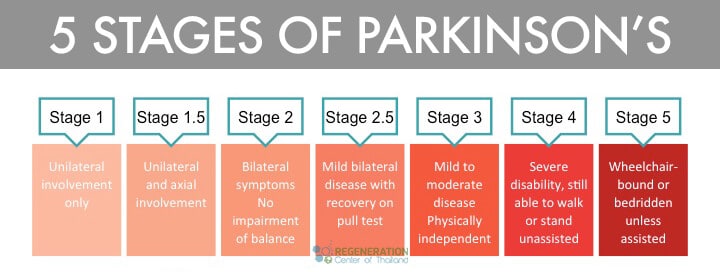
Neural Stem Cell Therapy For Parkinson S Disease Pd

Differentiation And Diagnosis Of Tremor American Family Physician
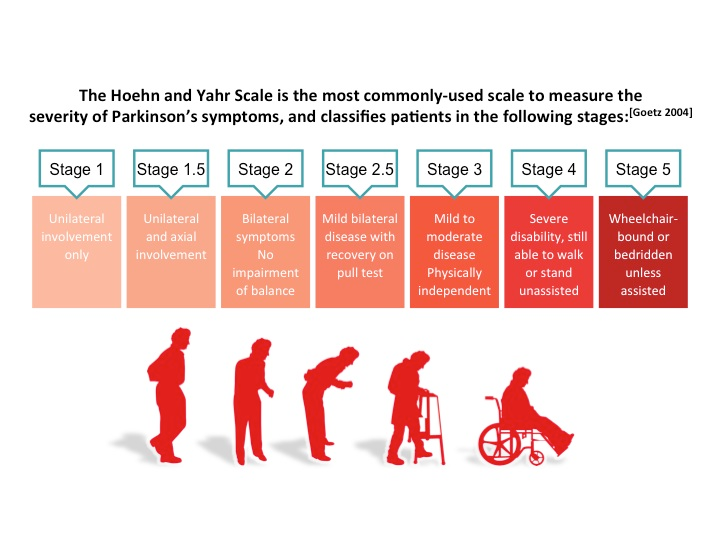
Parkinson S Why Wait Connect Neuro Physiotherapy
Pull Test In Parkinsons Disease のギャラリー
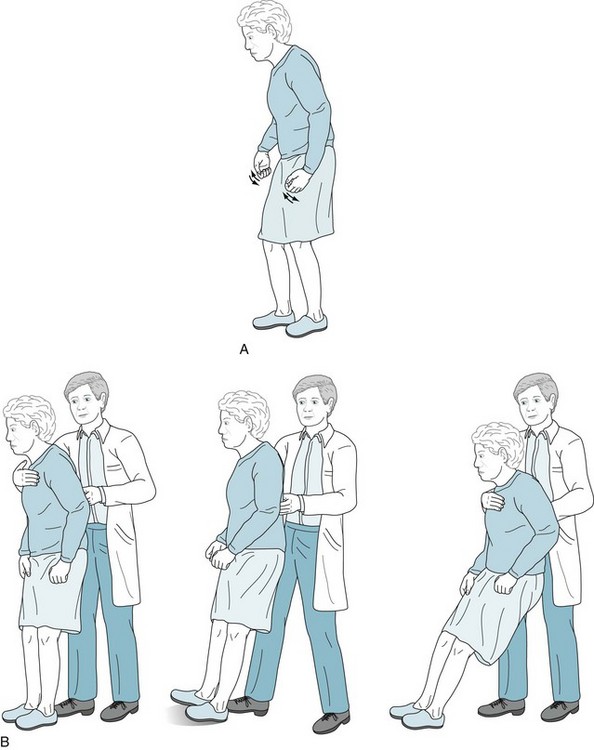
Involuntary Movement Disorders Neupsy Key
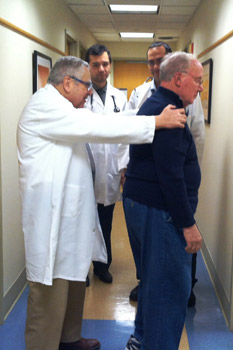
About Movement Disorders

We Need To Talk About The Updrs The Science Of Parkinson S

Early Postural Instability In Parkinson S Disease A Biomechanical Analysis Of The Pull Test

Pdf The Choice Of Leg During Pull Test In Parkinson S Disease Not Mere Chance Semantic Scholar

The Retropulsion Test A Good Evaluation Of Postural Instability In Parkinson S Disease Journal Of Parkinson S Disease

Lessons Learned Symptomatic Trials In Early Parkinson S Disease Chapter 26 Parkinson S Disease
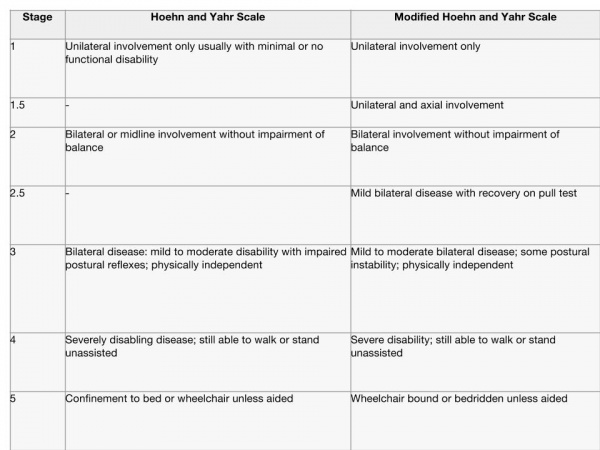
Parkinson S Clinical Presentation Physiopedia

Home Based Prescribed Exercise Improves Balance Related Activities In People With Parkinson S Disease And Has Benefits Similar To Centre Based Exercise A Systematic Review Sciencedirect
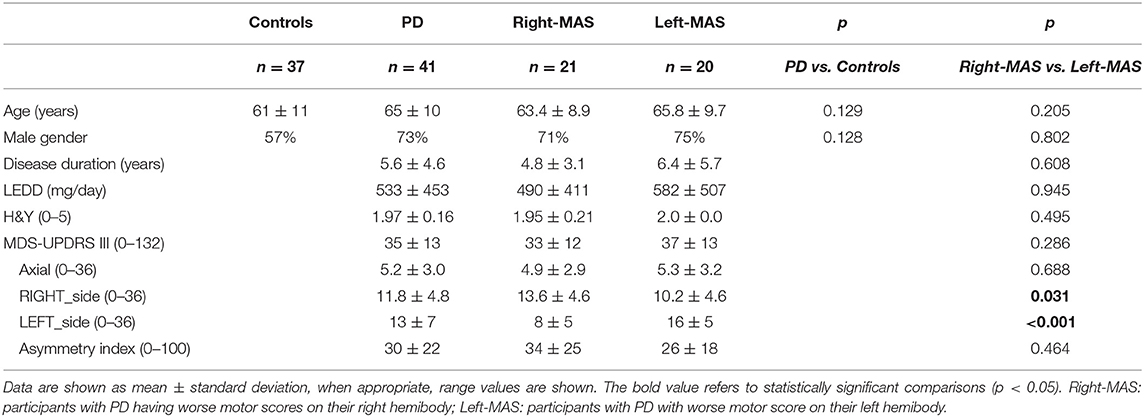
Frontiers The Choice Of Leg During Pull Test In Parkinson S Disease Not Mere Chance Neurology

Frontiers Evaluation Of Balance Disorders In Parkinson S Disease Using Simple Diagnostic Tests Not So Simple To Choose Neurology

Pdf How I Examine My Patient The Retropulsion Test A Good Evaluation Of Postural Instability In Parkinson S Disease Semantic Scholar

Falls In Parkinson S Disease A Complex And Evolving Picture Fasano 17 Movement Disorders Wiley Online Library
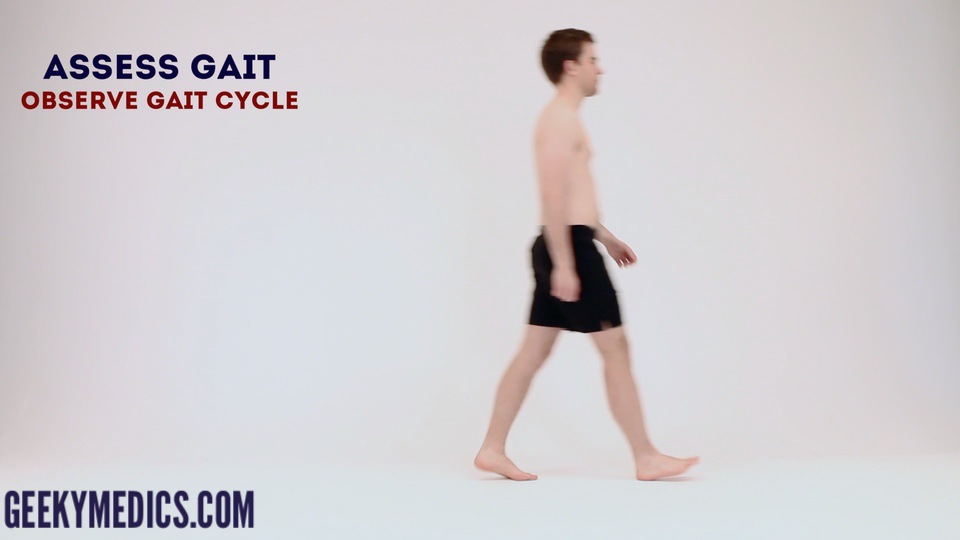
Parkinson S Disease Examination Osce Neurology Geeky Medics
Prediction Of Falls And Or Near Falls In People With Mild Parkinson S Disease
Www Parkinsons Va Gov Northwest Documents Pt Ed Handouts Peterson Handouts 3 16 12 Pdf

Comparing Balance Performance On Force Platform Measures In Individuals With Parkinson S Disease And Healthy Adults
Q Tbn And9gcqbx9nbf2cah4b1qyfv0z2ikk8w Dxmshzitxwr1nspt Enrqrf Usqp Cau
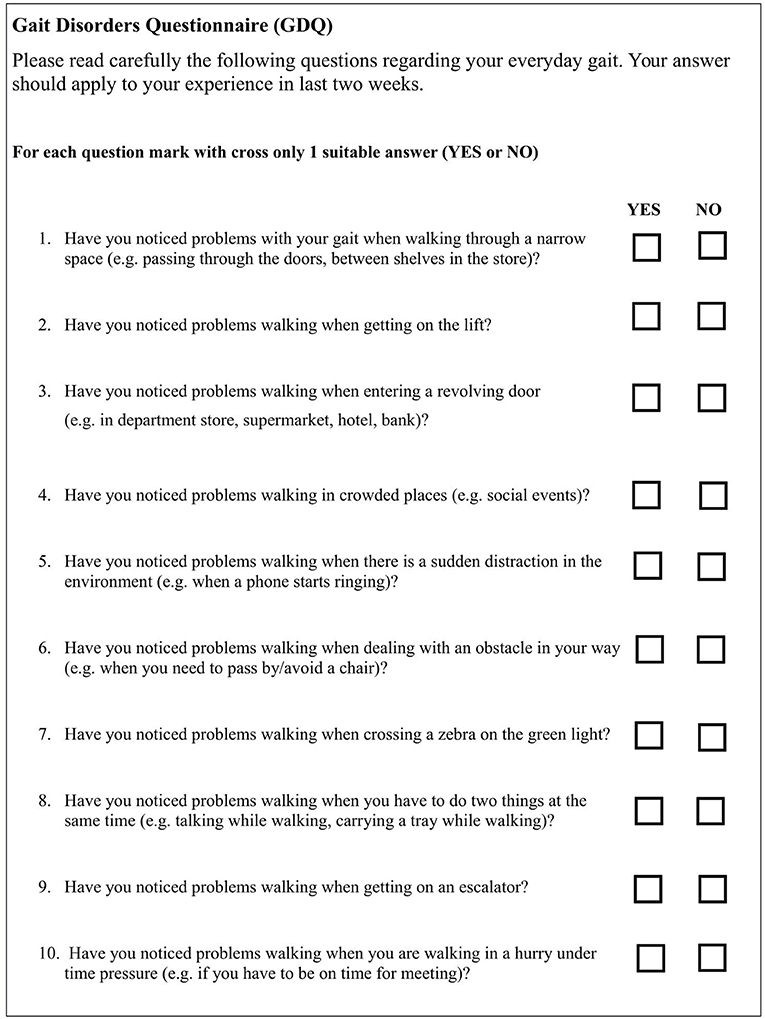
Frontiers Gait Disorders Questionnaire Promising Tool For Virtual Reality Designing In Patients With Parkinson S Disease Neurology
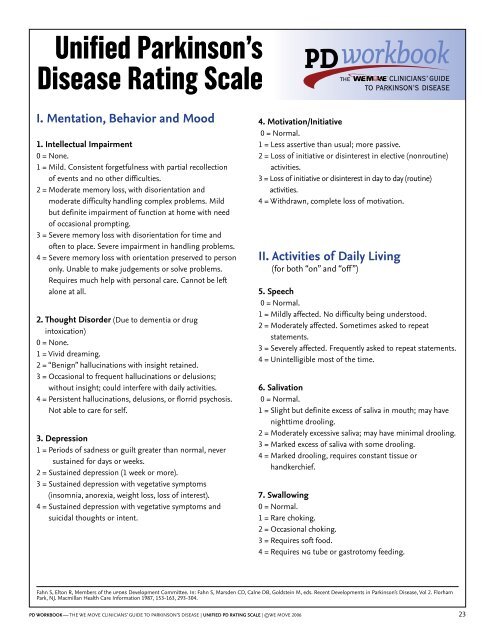
Unified Parkinson S Disease Rating Scale Medscape

Voltage Adjustment Improves Rigidity And Tremor In Parkinson S Disease Patients Receiving Deep Brain Stimulation Xu Sh Yang C Xian Wb Gu J Liu Jl Jiang Ll Ye J Liu Ym Guo Qy

Pdf How I Examine My Patient The Retropulsion Test A Good Evaluation Of Postural Instability In Parkinson S Disease Semantic Scholar
Q Tbn And9gcq9mx19dfze5ambhfrdn4o6aypaxmuuu1lt I33rx5a1wdvawpz Usqp Cau
Q Tbn And9gcrnjpx8v B8ahwoxnnczqhhvx8gkyrakc4hn1jyc0imhahgzscj Usqp Cau
The Differential Diagnosis Of Parkinson S Disease Parkinson S Disease Ncbi Bookshelf

Parkinson S Disease Symptom Postural Instability Dr Paresh Doshi Youtube
Http N Neurology Org Content 62 1 125 Full Pdf

Pull Test Parkinson Parkinsons Disease Doctor Steve Abel

Movement Disorders In The Elderly Chapter 17 Reichel S Care Of The Elderly
Journals Sagepub Com Doi Pdf 10 1177

逆行测试 对帕金森氏病姿势不稳定性的良好评价 帕金森氏病杂志

Parkinson S Disease Exam Stanford Medicine 25 Stanford Medicine
Objective Assessment Of Fall Risk In Parkinson S Disease Using A Body Fixed Sensor Worn For 3 Days

Research In Parkinson S Disease In India A Review Surathi P Jhunjhunwala K Yadav R Pal Pk Ann Indian Acad Neurol

Hoehn And Yahr Stating Recommended Scale For Parkinson Disease Stating Download Scientific Diagram
Q Tbn And9gcqyrokpcoxmetl1rphwrzmtwnxkzzmblupzdrtzmcvlvn7vqpd7 Usqp Cau

Figure 1 From Pull Test Estimation In Parkinson S Disease Patients Using Wearable Sensor Technology Semantic Scholar

Postural Instability Parkinson S Disease And Occupational Therapy

Voltage Adjustment Improves Rigidity And Tremor In Parkinson S Disease Patients Receiving Deep Brain Stimulation Xu Sh Yang C Xian Wb Gu J Liu Jl Jiang Ll Ye J Liu Ym Guo Qy

Research In Parkinson S Disease In India A Review Surathi P Jhunjhunwala K Yadav R Pal Pk Ann Indian Acad Neurol

Research In Parkinson S Disease In India A Review Surathi P Jhunjhunwala K Yadav R Pal Pk Ann Indian Acad Neurol

Enhanced Exercise Therapy In Parkinson S Disease A Comparative Effectiveness Trial Journal Of Science And Medicine In Sport

Pull Test Parkinson Parkinsons Disease Doctor Steve Abel
Github Sayakpaul Parkinson S Disease Classifier Deep Learning Experiments To Design A Model To Predict Parkinson S Diseases With The Images Of Spiral Wave Test
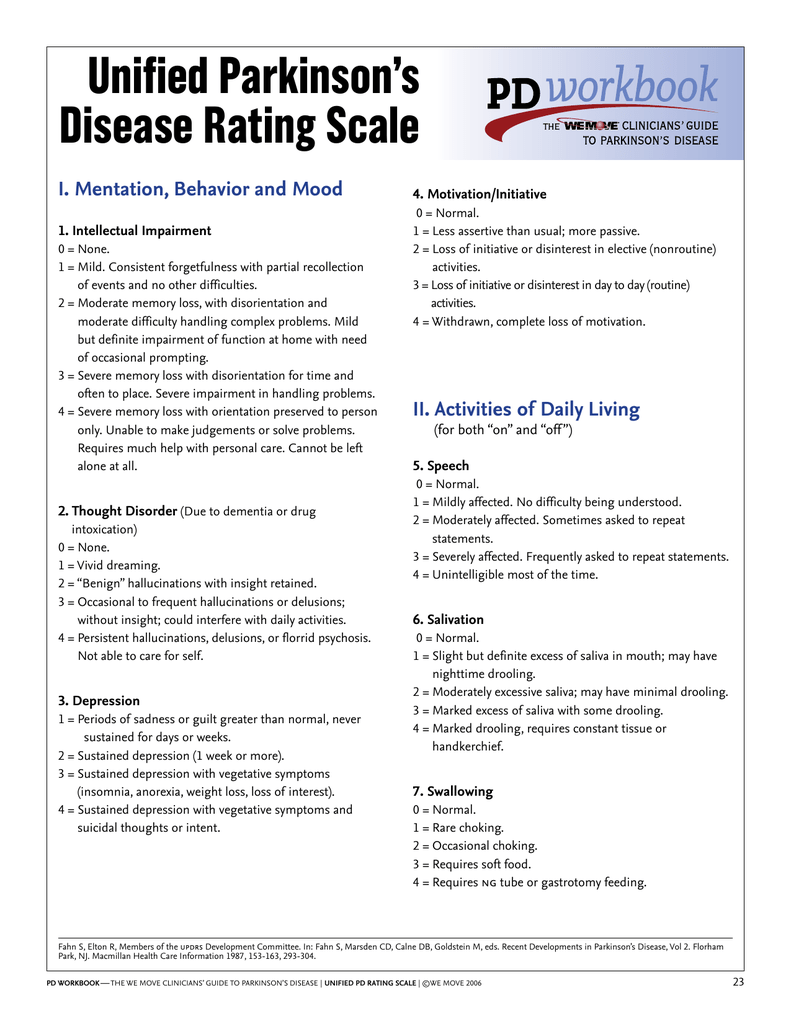
Unified Parkinson S Disease Rating Scale
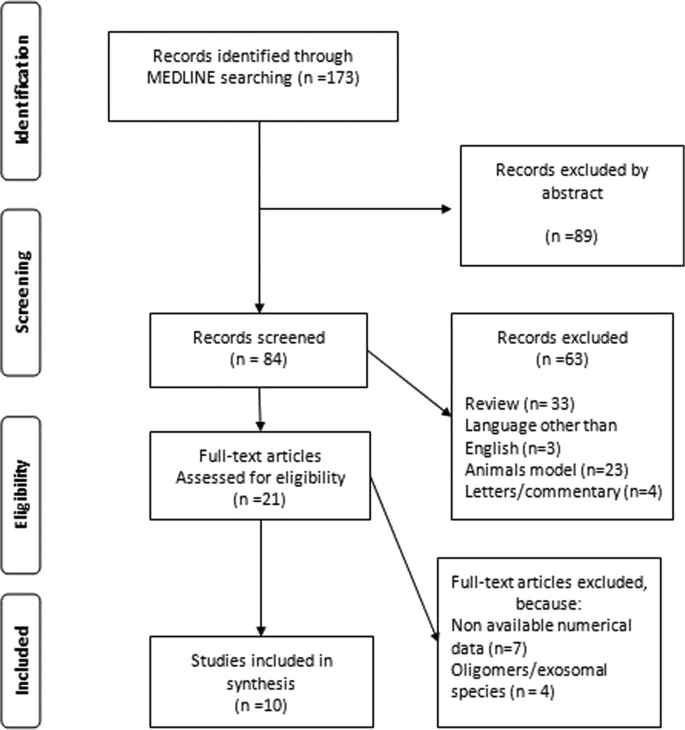
Plasma Alpha Synuclein Levels In Patients With Parkinson S Disease A Systematic Review And Meta Analysis Springerlink

Staging Of Parkinsons Disease Download Table

Parkinson S Disease Sketchy Medicine

Retropulsion Youtube

Quantitative Gait Analysis In Parkinson S Disease Comparison With A Healthy Control Group Archives Of Physical Medicine And Rehabilitation
/GettyImages-97863284-57115ef45f9b588cc2f7339e.jpg)
How Parkinson S Disease Is Diagnosed

Association Between Parkinson S Disease Subtypes And Tests Of Physical Function The 360 Degree Turn Test Is Most Predictive Biorxiv

Scoring Of The Retropulsion Test As Defined By The Mds Updrs Scale Download Table

Exercise Response In Parkinson S Disease Insights From A Cross Sectional Comparison With Sedentary Controls And A Per Protocol Analysis Of A Randomised Controlled Trial Bmj Open
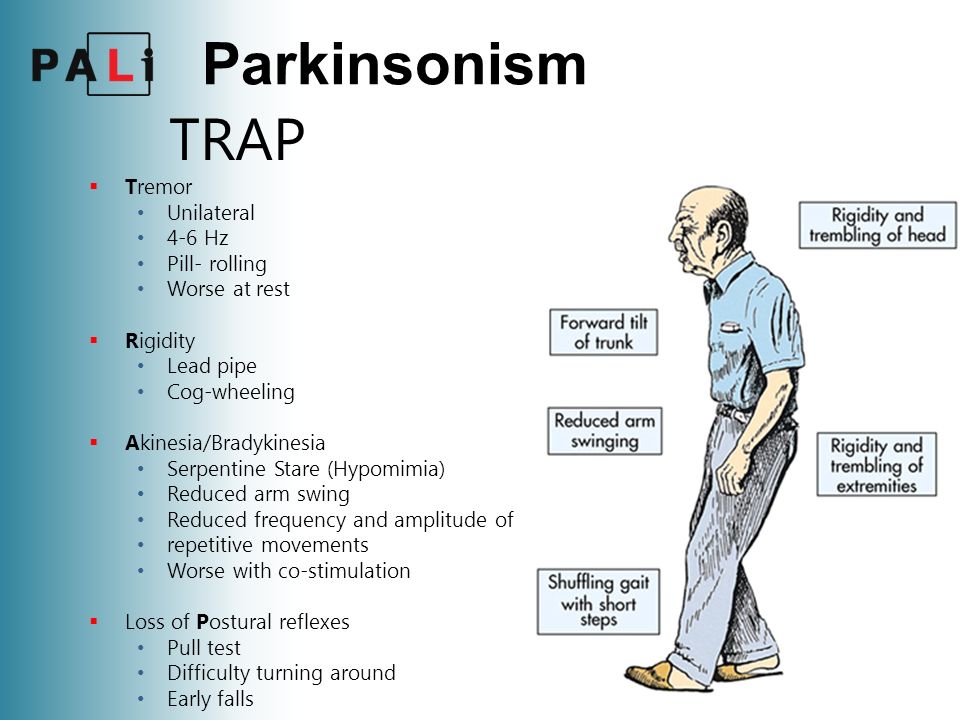
Parkinson S And Epilepsy Sheelagh Harwell Ppt Video Online Download
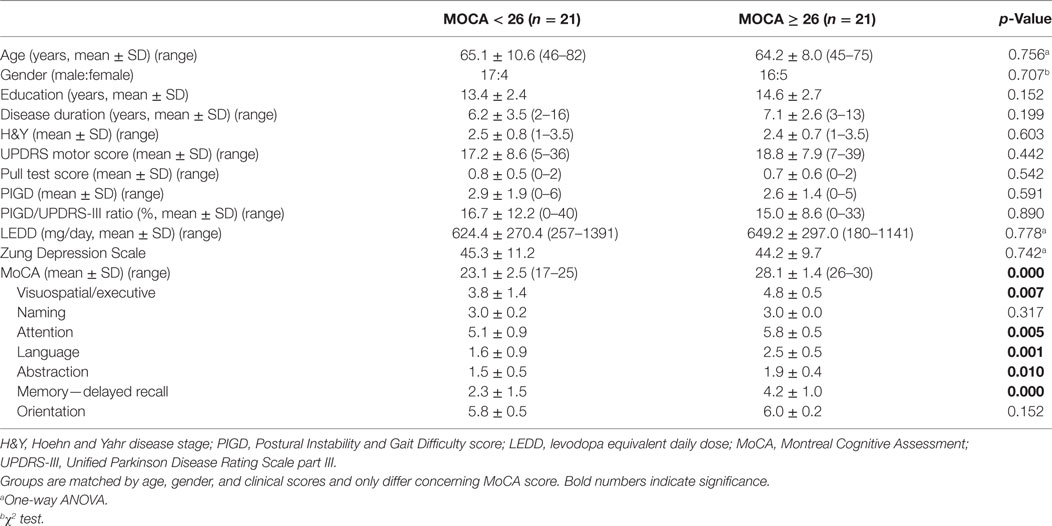
Frontiers Gait And Cognition In Parkinson S Disease Cognitive Impairment Is Inadequately Reflected By Gait Performance During Dual Task Neurology

Pdf Pull Test Performance And Correlation With Falls Risk In Parkinson S Disease Semantic Scholar
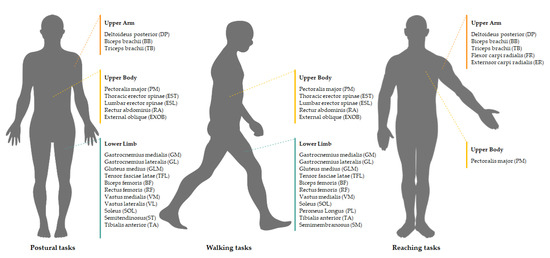
Sensors Special Issue Sensors And Sensing Technology Applied In Parkinson Disease
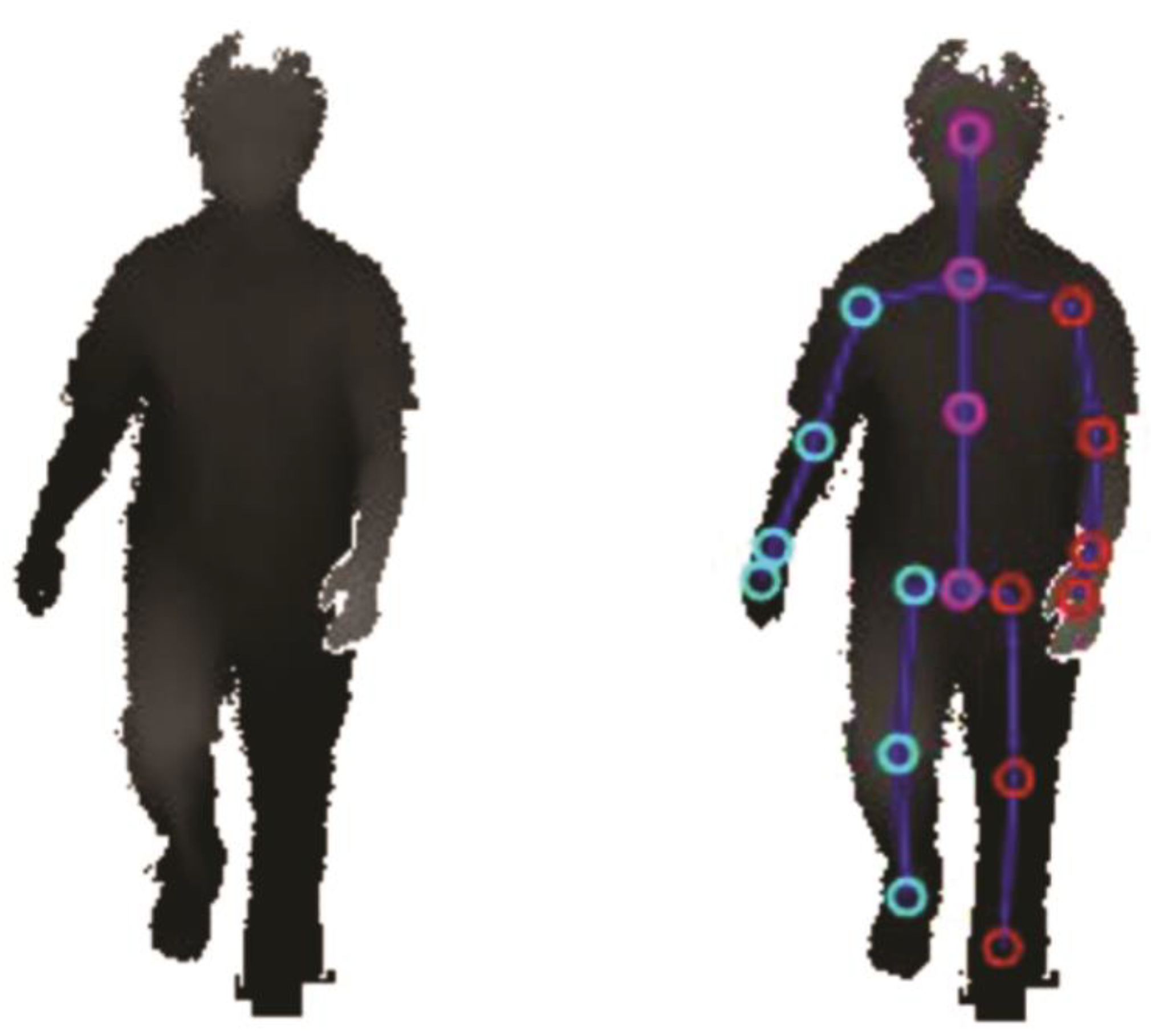
Sensors Free Full Text Instrumental Assessment Of Stepping In Place Captures Clinically Relevant Motor Symptoms Of Parkinson S Disease

International Encyclopedia Of Rehabilitation Pdf Free Download

An Instrumented Pull Test To Characterize Postural Responses Protocol

The Utility Of An Instrumented Pull Test To Evaluate Postural Instability In Parkinson S Disease
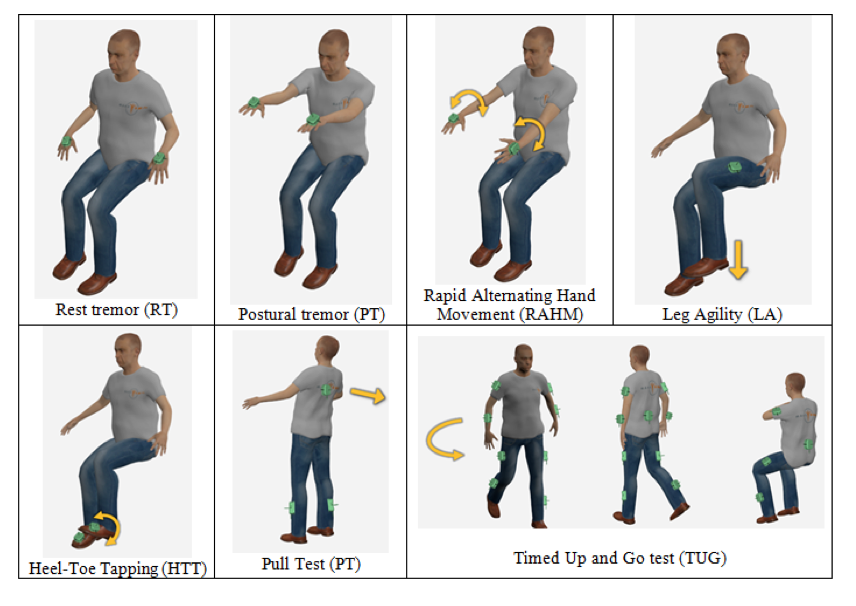
Technology Based Therapy Response And Prognostic Biomarkers In Parkinson S Disease Results From A Prospective Evaluation Of A De Novo Pd Patients Cohort Mds Abstracts

Evaluation Of The Pull Test Technique In Assessing Postural Instability In Parkinson S Disease Semantic Scholar
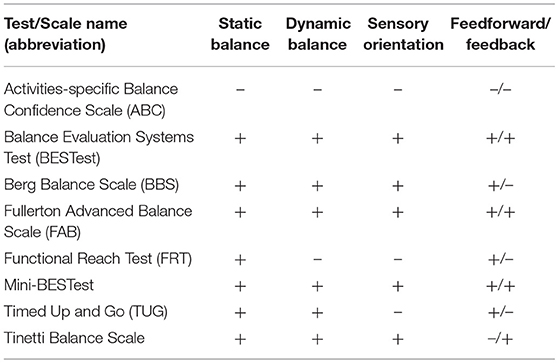
Frontiers Evaluation Of Balance Disorders In Parkinson S Disease Using Simple Diagnostic Tests Not So Simple To Choose Neurology

Pdf Pull Test Performance And Correlation With Falls Risk In Parkinson S Disease
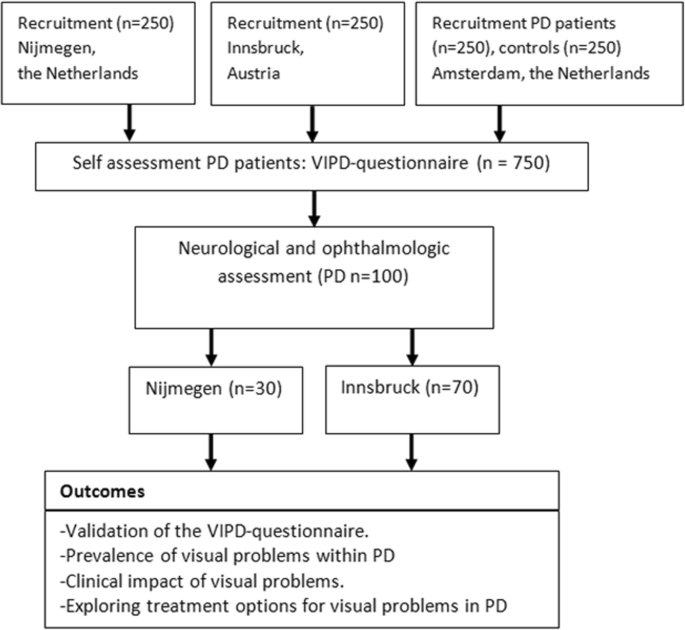
Towards Seeing The Visual Impairments In Parkinson S Disease Protocol For A Multicentre Observational Cross Sectional Study Bmc Neurology Full Text
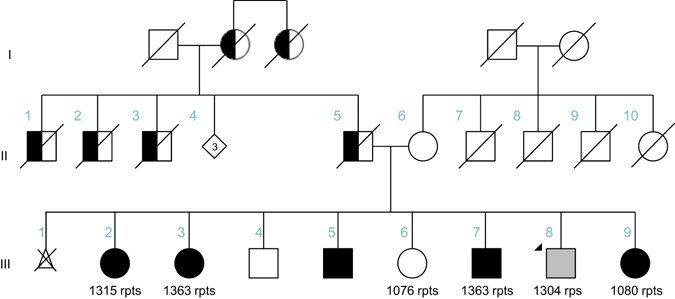
Parkinson S Disease Associated With Pure Atxn10 Repeat Expansion Npj Parkinson S Disease
2

Pdf An Alternative Clinical Postural Stability Test For Patients With Parkinson S Disease

Parkinsonism Related Disorders

Latest Parkinson Gifs Gfycat
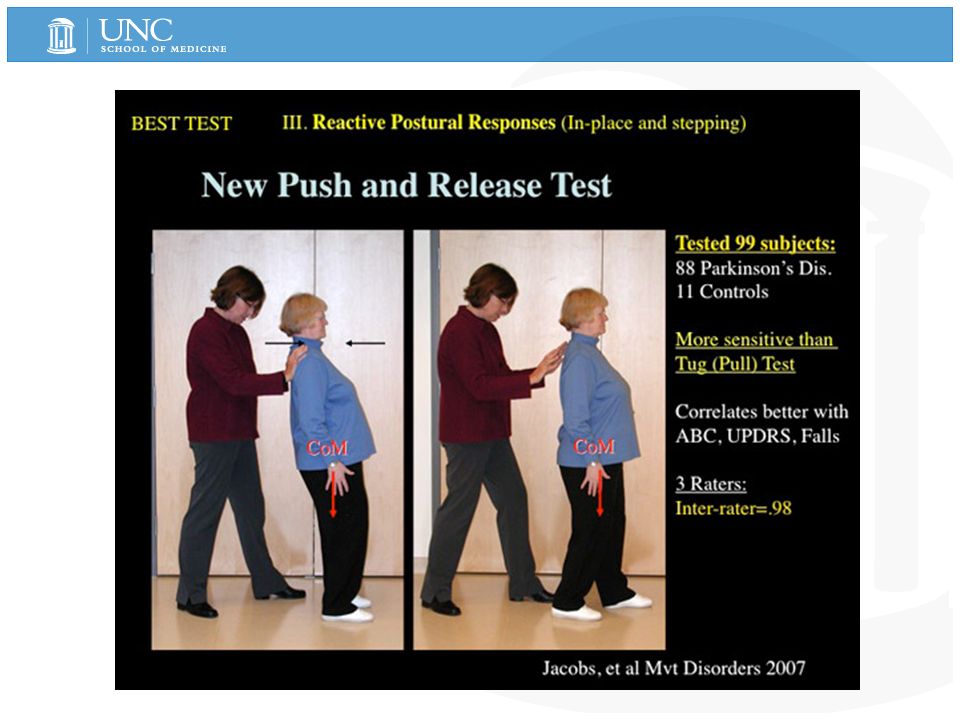
Parkinson Disease New Perspectives From Clinical Research Ppt Download

Parkinson S Disease

Parkinson S Disease Exam Stanford Medicine 25 Stanford Medicine

Framework For Understanding Balance Dysfunction In Parkinson S Disease Abstract Europe Pmc
2

Pdf Prospective Assessment Of Falls In Parkinson S Disease Bastiaan Bloem Academia Edu

Exercise For Parkinson S Disease Sciencedirect

Figure 1 From An Alternative Clinical Postural Stability Test For Patients With Parkinson S Disease Semantic Scholar

Pdf The Choice Of Leg During Pull Test In Parkinson S Disease Not Mere Chance Semantic Scholar

Pdf The Retropulsion Test A Good Evaluation Of Postural Instability In Parkinson S Disease

Full Text A Posturographic Procedure Assessing Balance Disorders In Parkinson S Cia

Effects Of Deep Brain Stimulation And Levodopa On Postural Sway In Parkinson S Disease Journal Of Neurology Neurosurgery Psychiatry

The Effects Of Mindfulness Meditation Based Complex Exercise Program On Motor And Nonmotor Symptoms And Quality Of Life In Patients With Parkinson S Disease Asian Nursing Research

An Instrumented Pull Test To Characterize Postural Responses Protocol

Tremor Sorting Through The Differential Diagnosis American Family Physician
Prediction Of Falls And Or Near Falls In People With Mild Parkinson S Disease
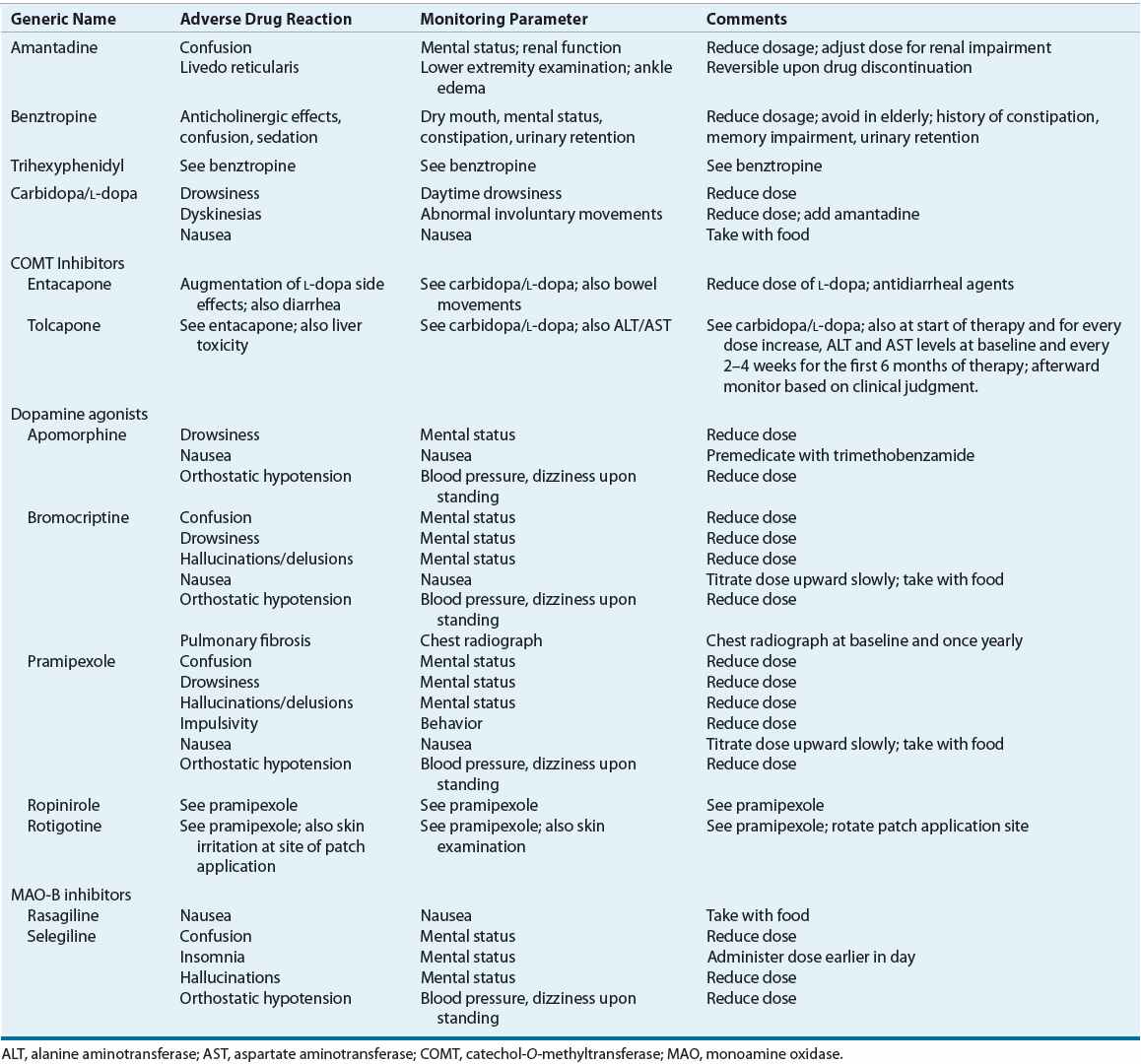
Parkinson S Disease Basicmedical Key

Full Text A Posturographic Procedure Assessing Balance Disorders In Parkinson S Cia

Abstracts 18 Movement Disorders Wiley Online Library
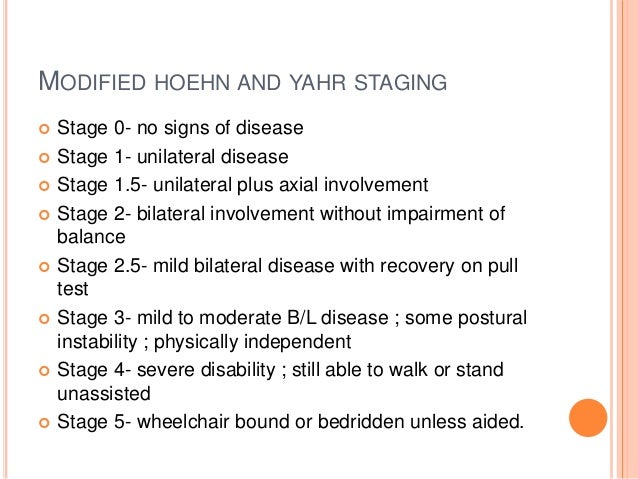
Functional Assessment Scale For Parkinson Disease
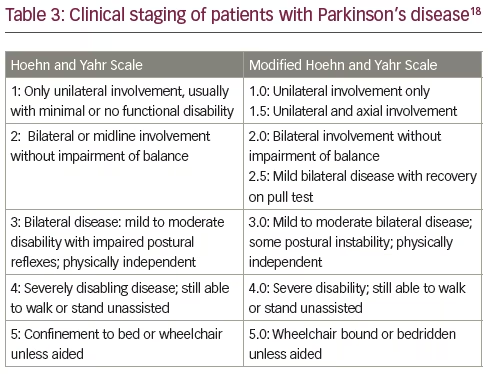
Safinamide A New Therapeutic Option To Address Motor Symptoms And Motor Complications In Mid To Late Stage Parkinson S Disease Touchneurology

The Retropulsion Test A Good Evaluation Of Postural Instability In Parkinson S Disease Journal Of Parkinson S Disease

Research In Parkinson S Disease In India A Review Surathi P Jhunjhunwala K Yadav R Pal Pk Ann Indian Acad Neurol

The Hoehn Yahr Scale Classifying Different Stages Of Parkinson S Download Scientific Diagram

Parkinson S Disease Exam Stanford Medicine 25 Stanford Medicine

Parkinson S Clinical Presentation Physiopedia

Pdf Doppler Ultrasonographic Examination Of The Leg Veins Of Patients With Parkinson Disease

The Retropulsion Test A Good Evaluation Of Postural Instability In Parkinson S Disease Journal Of Parkinson S Disease

Diagnostic Approach To Atypical Parkinsonian Syndromes Abstract Europe Pmc



